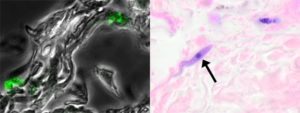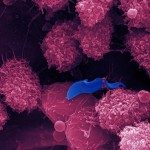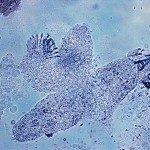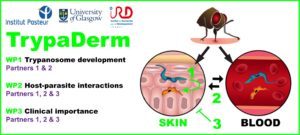About
Trypanosoma brucei gambiense causes chronic Human African Trypanosomiasis. These extra-cellular protist parasites are transmitted by tsetse flies and proliferate in the host blood. We have recently demonstrated that the skin was a major yet overlooked anatomical reservoir for trypanosomes that may thwart control programs. This project aims at understanding the biological significance of skin parasites, especially how they impact our current view of transmission, diagnosis and treatment. We will (1) unravel the development of skin-dwelling parasites (differentiation, proliferation, migration), (2) study host/parasites interactions (sequestration, skin remodelling) and (3) further translate these results into applications (prevalence, treatment efficacy and new detection methods). Overall, this multi-disciplinary project will greatly increase our understanding of trypanosome biology in a yet unexplored compartment, and will be determinant for the possible HAT elimination.
 Left: Trypanosomes (Trypanosoma brucei brucei, fluorescent green) in the dermis of a mouse with no parasites in the bloodstream, 29 days after infection. Right: A trypanosome (Trypanosoma brucei gambiense, the purple cell indicated by a black arrow) in the dermis of an asymptomatic individual living in an endemic area in the Democratic Republic of Congo. From Capewell et al. eLife 2016.
Left: Trypanosomes (Trypanosoma brucei brucei, fluorescent green) in the dermis of a mouse with no parasites in the bloodstream, 29 days after infection. Right: A trypanosome (Trypanosoma brucei gambiense, the purple cell indicated by a black arrow) in the dermis of an asymptomatic individual living in an endemic area in the Democratic Republic of Congo. From Capewell et al. eLife 2016.
In collaboration with: IRD-CIRAD InterTryp (Montpellier), Wellcome Trust (Glasgow), HAT-NCP (Conakry), Institut Pierre Richet (Bouaké) & Université Jean Lorougnon Guédé (Daloa)
Primary funding: ANR PRC 2018 TrypaDerm
Secondary funding: Wellcome Trust & Bill (MacLeod Lab) and Melinda Gates Foundation (TrypaNo!)











